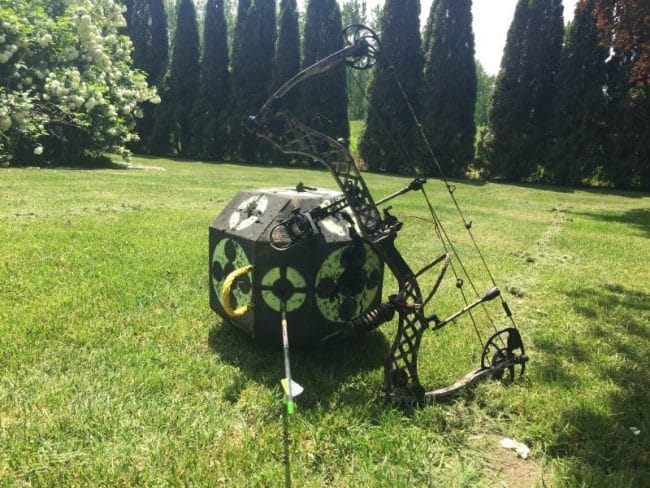By Jason Reid

(Rochester, NY) In the coming weeks, every archer will visit their respective technician shop to have their bow tuned up for the season if they have not already. Then, after picking up the freshly tuned piece of equipment, the struggle of regaining your mechanics from months of inactivity hits your muscles. Arrows fly everywhere as you try to put things on paper and work backwards to your max distance. With time always a factor, practice does not always happen every day as we would like.
I realized a major factor determining the consistency of my arrows was my breathing.
How often do we focus on our breathing when shooting? Sure,we all know the classic methods, but fail to be able to use them during crunch time since they are not practiced. In order to fine tune my shooting, researching breathing techniques and experimenting was in order. Trying several different methods helped me find what worked with my body before making a conscious effort to improve my breathing techniques, Before I took a conscious effort to control my breathing, my breath was sporadic forcing my draw stamina to be much shorter and overall consistency to be lower.
Here are three techniques I’ve tested.
1)Classic. Classic breathing I refer to is the way in which you breath to shoot a gun. This involves taking a deep breath, exhaling completely, then taking half a breath and letting it out slowly while aiming and shooting. While I found this method to work decently, I couldn’t help but feel like I was rushing while anchoring my pins. While letting air slowly escape from my lungs it was like trying to beat the clock in getting the arrow down range before I ran out of breath. Rushed shots with a bow don’t end well.

2) Breath and a Half: Through watching videos and reading even yoga blogs I found a general method to take a deep breath, let half out, hold through shot. I found my body responded better to this method than the first since my body was not moving. Without steadily exhaling through I felt more steady through the shot. However, I still found my muscles starving for oxygen. The classic method seemed to give my muscles more oxygen and this method helped me become steady faster but there was something missing.
3)Super Saturate: Watching a video by Bowhunting Legend Randy Ulmer was the ticket. Ulmer advised to supersaturate the body with three breaths. One deep breath before draw. A second while drawing and a third as you settle the pins, but exhaling a quarter of your air. This not only gives your muscles plenty of oxygen but helps keep your chest expanded and your scapulas taught, steady for the shot, my college hunting partner and biology major pointed out. Coincidentally Ulmer also explained this in the video. Because of the saturation of oxygen to your muscles and using filled lungs to help steady my upper body, I found my best consistency. Forming a habit of this routine fairly quickly was not difficult. I feel focused and relaxed while settling my pins and sending my arrows down range.
There are various different breathing methods to learn. Finding what works best for your body is important, but making the conscious choice to work on this simple step might be the difference between food in November and tag soup. A simple aspect of the game worth visiting to make the long wait for your one shot worth the wait.
Even with the midsummer burgers dripping with sauce and sweat collecting under the brim of your ball cap while kids splash in the pool, the hunter in each of us looks to the sky, knowing the months will once again begin tightening their grip on the weather as fall is realistically around the corner. Looking up from grilling one of my few packages left of whitetail burgers I reflected back to the shot which put this doe on the grill. Now, 10 months later, the 21 yard shot seems like a blur. Closing the lid on the grill and looking out at my archery target I know it is practice season.
About: Highly competitive and driven to tell the next great story, Jason Reid combines a passion for stories and gear with the written word. Follow his adventures on Twitter for honest reviews, information and unique stories from around the outdoor world.
